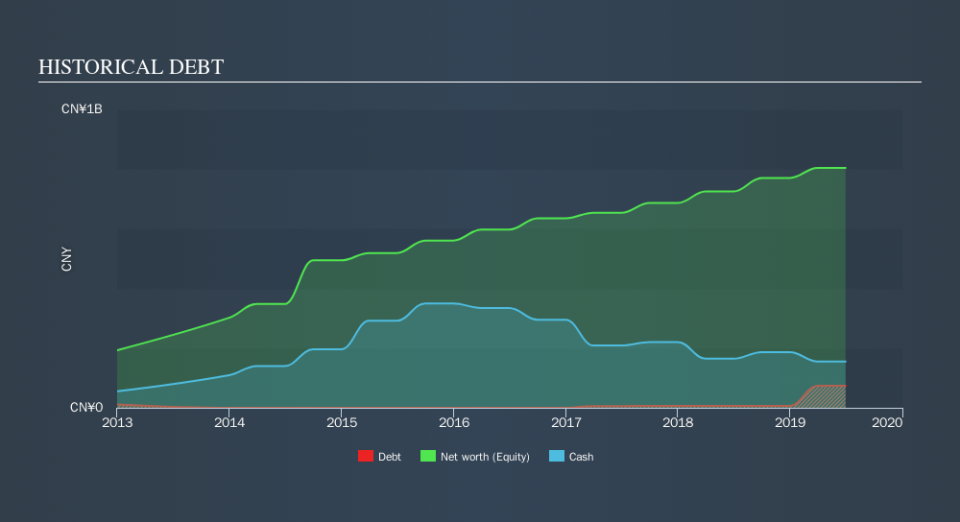Does BBI Life Sciences (HKG:1035) Have A Healthy Balance Sheet?

Howard Marks put it nicely when he said that, rather than worrying about share price volatility, 'The possibility of permanent loss is the risk I worry about... and every practical investor I know worries about.' When we think about how risky a company is, we always like to look at its use of debt, since debt overload can lead to ruin. Importantly, BBI Life Sciences Corporation (HKG:1035) does carry debt. But is this debt a concern to shareholders?
When Is Debt A Problem?
Debt is a tool to help businesses grow, but if a business is incapable of paying off its lenders, then it exists at their mercy. In the worst case scenario, a company can go bankrupt if it cannot pay its creditors. However, a more usual (but still expensive) situation is where a company must dilute shareholders at a cheap share price simply to get debt under control. Of course, plenty of companies use debt to fund growth, without any negative consequences. When we think about a company's use of debt, we first look at cash and debt together.
Check out our latest analysis for BBI Life Sciences
How Much Debt Does BBI Life Sciences Carry?
You can click the graphic below for the historical numbers, but it shows that as of June 2019 BBI Life Sciences had CN¥74.3m of debt, an increase on CN¥6.28m, over one year. However, it does have CN¥155.1m in cash offsetting this, leading to net cash of CN¥80.8m.
A Look At BBI Life Sciences's Liabilities
We can see from the most recent balance sheet that BBI Life Sciences had liabilities of CN¥319.7m falling due within a year, and liabilities of CN¥10.5m due beyond that. Offsetting this, it had CN¥155.1m in cash and CN¥186.1m in receivables that were due within 12 months. So it can boast CN¥11.0m more liquid assets than total liabilities.
Having regard to BBI Life Sciences's size, it seems that its liquid assets are well balanced with its total liabilities. So it's very unlikely that the CN¥1.02b company is short on cash, but still worth keeping an eye on the balance sheet. Simply put, the fact that BBI Life Sciences has more cash than debt is arguably a good indication that it can manage its debt safely.
And we also note warmly that BBI Life Sciences grew its EBIT by 17% last year, making its debt load easier to handle. There's no doubt that we learn most about debt from the balance sheet. But it is BBI Life Sciences's earnings that will influence how the balance sheet holds up in the future. So when considering debt, it's definitely worth looking at the earnings trend. Click here for an interactive snapshot.
Finally, a company can only pay off debt with cold hard cash, not accounting profits. BBI Life Sciences may have net cash on the balance sheet, but it is still interesting to look at how well the business converts its earnings before interest and tax (EBIT) to free cash flow, because that will influence both its need for, and its capacity to manage debt. During the last three years, BBI Life Sciences burned a lot of cash. While investors are no doubt expecting a reversal of that situation in due course, it clearly does mean its use of debt is more risky.
Summing up
While it is always sensible to investigate a company's debt, in this case BBI Life Sciences has CN¥81m in net cash and a decent-looking balance sheet. And it impressed us with its EBIT growth of 17% over the last year. So we don't have any problem with BBI Life Sciences's use of debt. Above most other metrics, we think its important to track how fast earnings per share is growing, if at all. If you've also come to that realization, you're in luck, because today you can view this interactive graph of BBI Life Sciences's earnings per share history for free.
At the end of the day, it's often better to focus on companies that are free from net debt. You can access our special list of such companies (all with a track record of profit growth). It's free.
We aim to bring you long-term focused research analysis driven by fundamental data. Note that our analysis may not factor in the latest price-sensitive company announcements or qualitative material.
If you spot an error that warrants correction, please contact the editor at editorial-team@simplywallst.com. This article by Simply Wall St is general in nature. It does not constitute a recommendation to buy or sell any stock, and does not take account of your objectives, or your financial situation. Simply Wall St has no position in the stocks mentioned. Thank you for reading.

